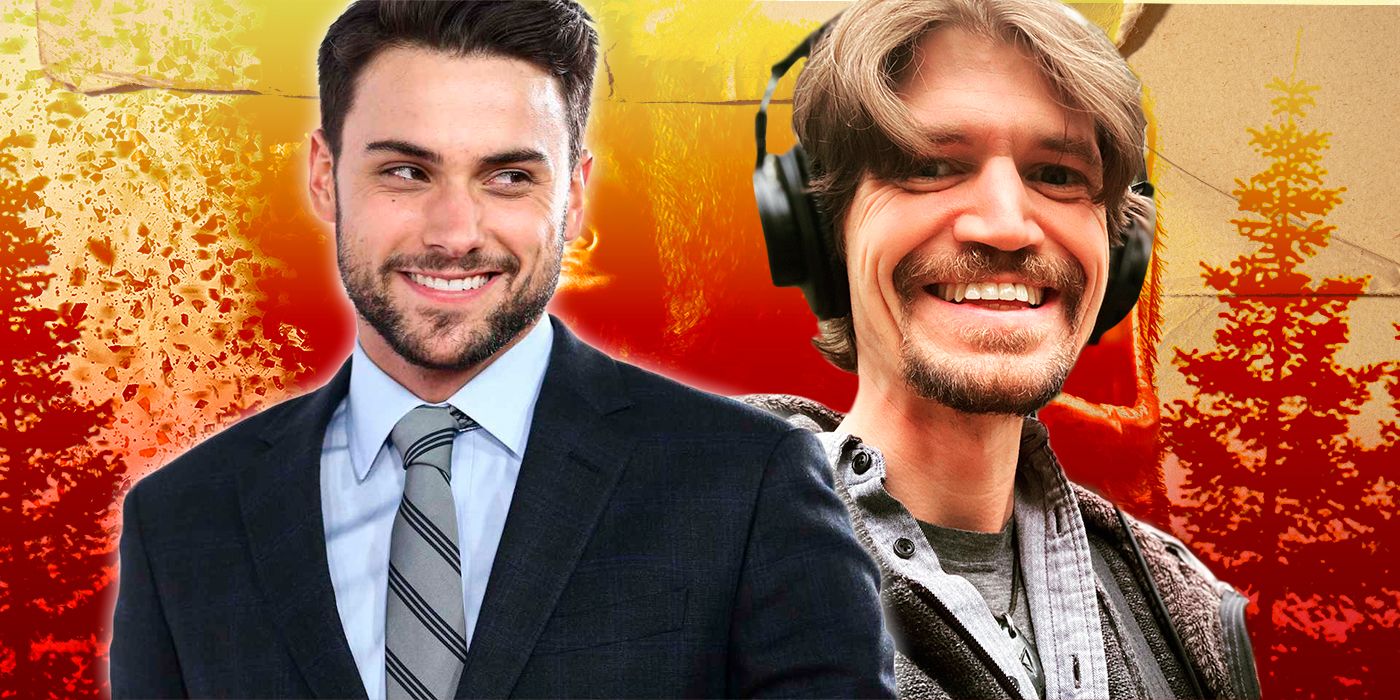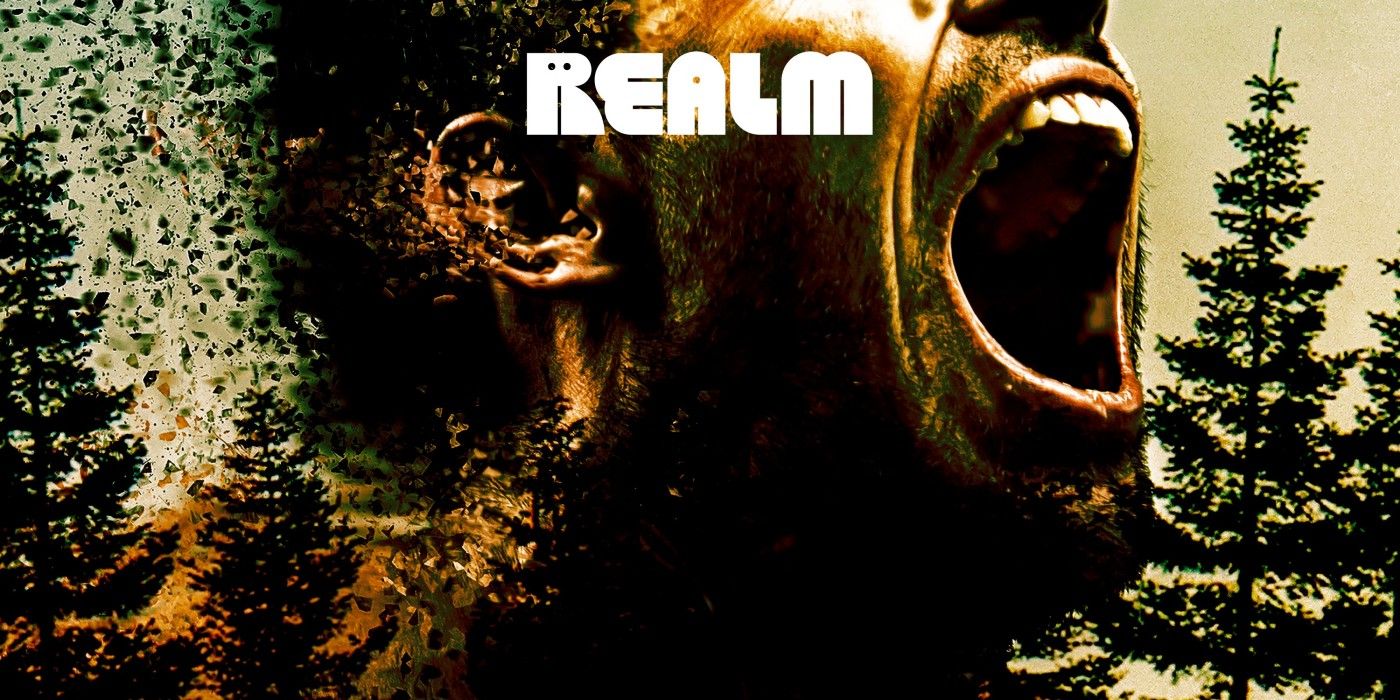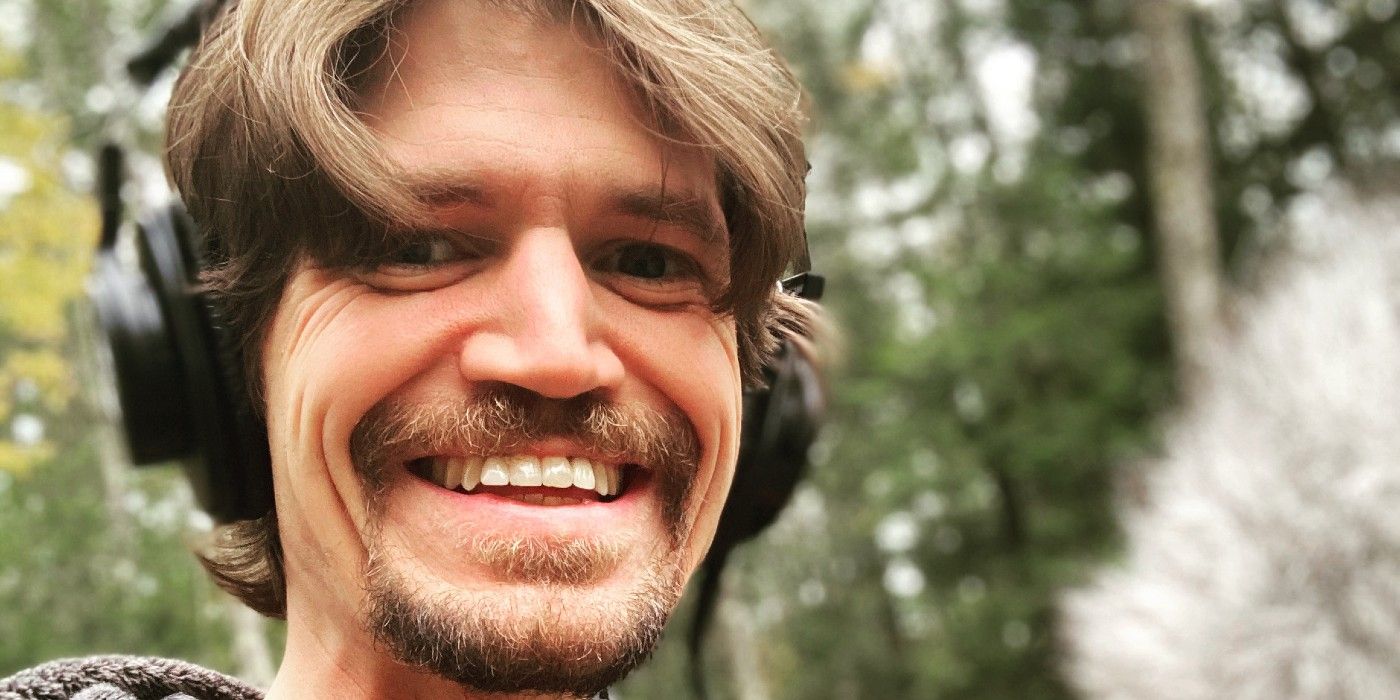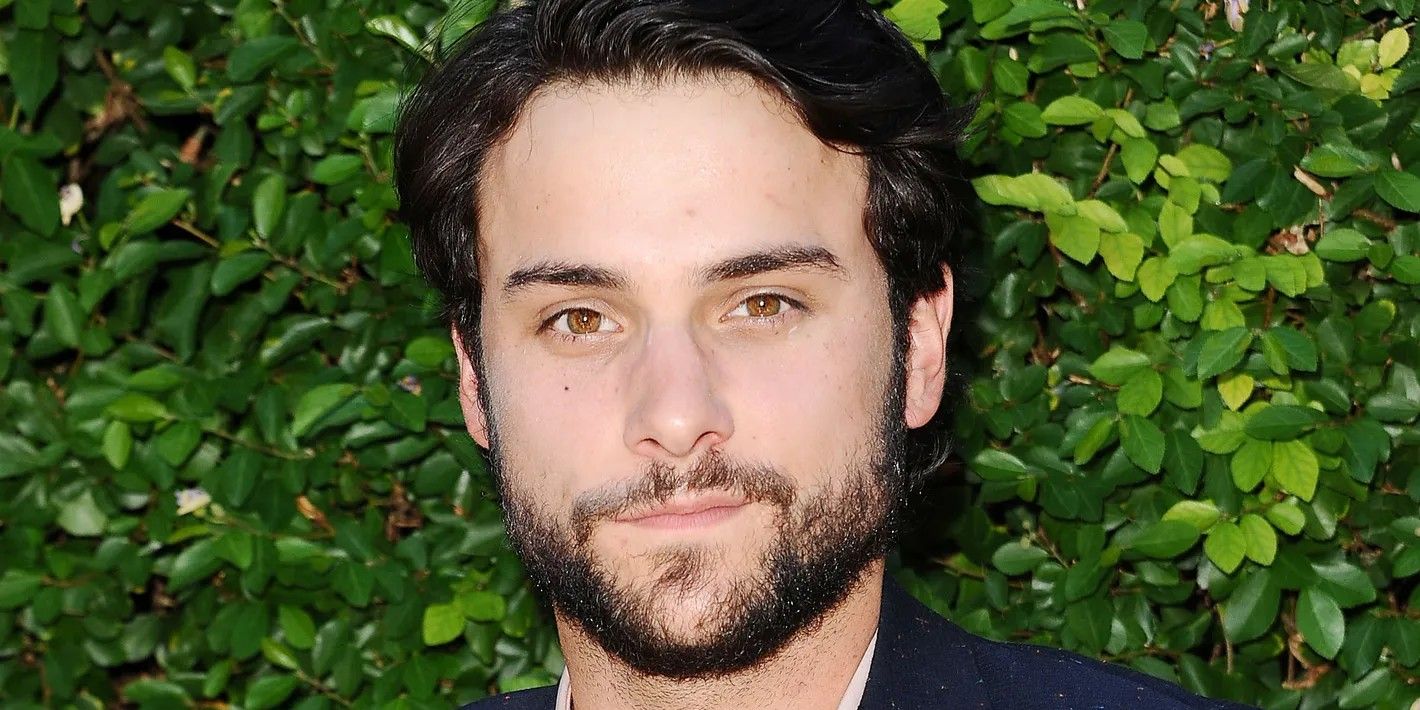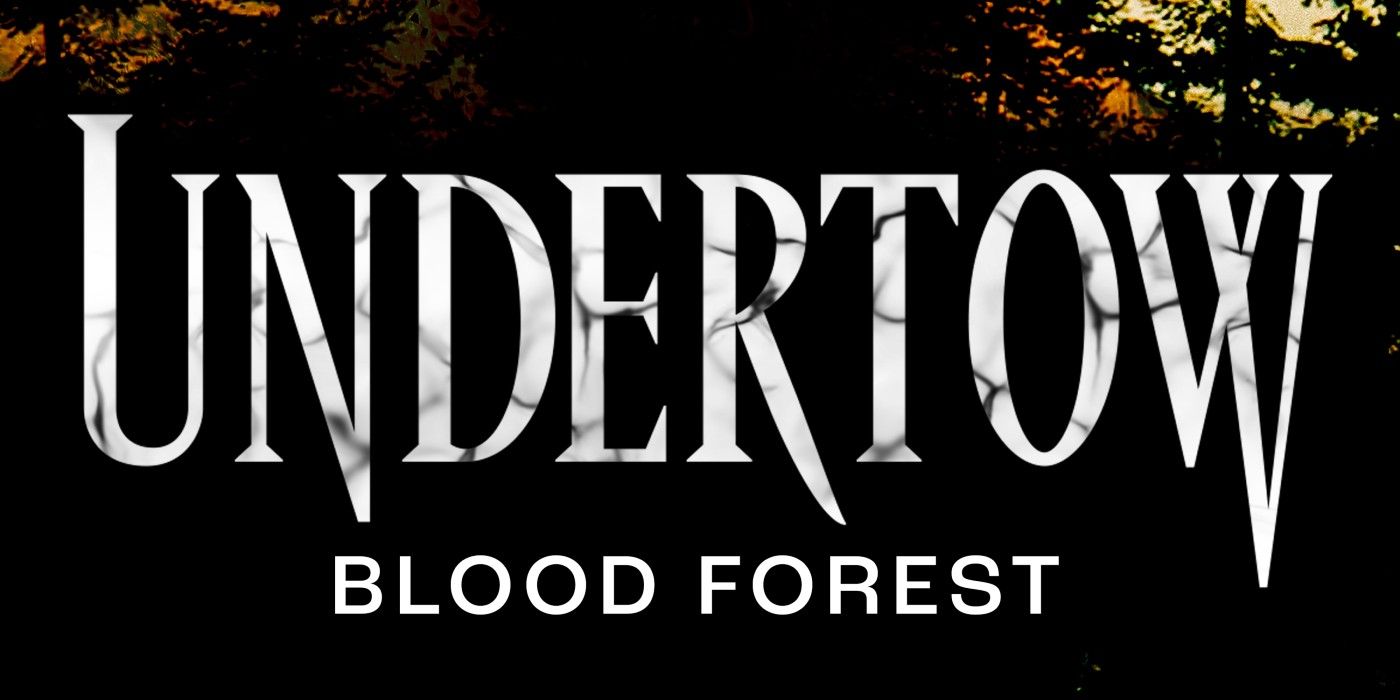The classic Universal monsters have always been staples of the Halloween season, but none have proven as enduring as the iconic werewolf. With recent additions to the genre, like Marvel's Werewolf by Night or 2021's Werewolves Within, it's clear that audiences are still eager to learn more about these shapeshifters. Blood Forest, the latest season of the ongoing supernatural horror podcast Undertow, gives listeners a new take on the monsters. Grounded in real human problems and relationships with plenty of atmosphere and rising dread, Undertow: Blood Forest is the perfect listening experience for werewolf fans.
To celebrate spooky season and the release of the first episode of Undertow: Blood Forest, Creator Fred Greenhalgh and star and Executive Producer Jack Falahee spoke with CBR about bringing the slow-burn werewolf horror podcast to life. The pair dive into what makes werewolves such scary monsters, how the sometimes long-distance recording process worked, and which werewolf transformation they like best.
CBR: Where did the idea, the inspiration for Blood Forest come from?
Fred Greenhalgh: Well, I've been slightly terrified of werewolves since I was a kid. It occurred to me that when I was young... I grew up on a farm, and I would go to feed the chickens at night, and there were lights. I would always imagine when I would see my silhouette, the shape of a werewolf, coming and snatching me and pulling me into the woods. So then it just took about 20 years of sitting with that crazy idea to say, "Wouldn't werewolves be fun in audio?" So yeah -- [it came from] just taking all the weird stuff from Maine and adding this heavy metal horror spin to it.
A natural outgrowth from a Maine childhood, then.
Greenhalgh: Very autobiographical, pretty much.
Jack, what got you involved with this? How did you come onboard to Blood Forest?
Jack Falahee: I've actually been a fan of [podcast studio] Realm. I first became aware of Realm when I saw that my friend Rory Culkin had done a show with them called Outliers, which is fantastic. Everyone should listen to it. Then another friend of mine created a podcast called From Now, and he asked me to voice a couple characters on it. That was the first time that I'd done podcast work and really any audio work, and I loved it. I love the escapism that it allows as a performer and a listener. It's just all up to your imagination, right? I think, especially over the pandemic, I was living in rural northern Michigan, which isn't too far off from Maine. I was walking around the woods, trying to take these long walks to get my body moving and listening to a lot of suspenseful and horror podcasts. So when the opportunity came to work with Fred on this, on Blood Forest, yeah, I had to jump at it.
Absolutely. Have you found that the experience of recording these podcasts differs a lot from your on-screen performances?
Falahee: Totally. I mean, I think there's a lot more you can do as a performer in the audio format just because you aren't fighting against what you look like. It was really fun to play around with my voice a little bit because I found that just hearing yourself and being in the booth with Fred and the other performers in your ears, that allows you to sort of manipulate, I think, a little bit more than when you're on-screen and a little bit more conscious of your body and your actual self. Also, just creatively, it was really expanding, I feel like, because most of the time, I wasn't even looking at the actor that I was performing with, so I'd imagine my friend in a role or my mother or whoever. So I found that to be a really interesting exercise in substitution as an actor, which brought out a lot of really cool things, I think, in the performance.
Agreed. Fred, can you talk a little about the process of recording for this and how you brought these performances out of your actors?
Greenhalgh: Sure. I mean, I strongly prefer, if we can, to... We're doing this all in a virtual environment due to the pandemic. Earlier in my career, my favorite thing to do was to take actors out into the real world and actually record on set like a movie. So in my head, I have this sense of this grounded, visceral reality that we're trying to do when there's thousands of miles of distance between the performers. One of the other major characters... A lot of people are in New York City, and Bree Klauser, who plays Eva, has herself a vision impairment. So we felt it would be fairest to have there be no camera for anyone. So that's [what] we have here -- it's all through the headphones.
This was almost 500 script pages, or something like that, that recorded over two weeks. So it was an intense experience over that period of time. We'd be jumping... We kind of recorded it based on which batch of characters made sense to record together, sort of building if not specific episodes [then] specific throughlines of character threads. So it was sort of doing that just the same as you would on set of like, "Okay, here's who you all are, [and] this is what we're doing today. This is what's happening in the scene. Go have fun." Just the energy and charisma of the group, even if it's literally you're just hearing voices in your head, was terrific and just really magical to hear in the room, and even more fun to hear now that we're putting it together as a finished show.
How involved are you with the sound design and the audio landscape that happens beyond just the voices and the script?
Greenhalgh: Deep and not deep in the sense that I am super particular [to the point] where my sound designer is like, "How many versions of wind does Fred really need to hear in this?" So Rory O'Shea is terrific. I've worked with him since back when we did Locke & Key for Audible, seven or eight years ago now. So we just have a long working relationship. Sometimes... there'll be like a particular sound that I'm like, "But it needs to be a specific kind of beaten up truck because the truck itself is a piece of characterization. So it can't be any truck." So I'm a very particular director, but I have a sound designer where we've just developed a very good short [hand], having worked together for so many years.
Blood Forest is billed as a werewolf story, but it's also, at its heart, a very human, grounded story of the relationships between the characters, but predominantly Frank and Eva and her family, and they're very complex relationships. So what about the sort of grounded human relationships helped you tell a monster story?
Greenhalgh: Honestly, I want to hear Jack's answer, too, but for me, just in terms of philosophically approaching the horror genre, if you don't care about the people who are at risk of dying, is it actually that interesting, especially when you're working in a medium that doesn't really have jumpscares? So the purpose of it is to be a story where if you stripped away all the horror elements, it would still be a good story, but also so that when those moments occur, where people we've fallen in love with face mortal danger, you're invested in them.
Falahee: Yeah, I agree. I mean, I think that that's something that jumped off the page at me when I read it was that you could just take out all of the horror elements, and it's a good story. I think even the little things of the school bullying and her wanting to relocate to New York and follow her dream, just rooting everything in naturalism and reality, I think, make the absurdity of the horror elements that much more jarring and also believable, in a way. It's a good juxtaposition, I think.
Was it intricate or difficult, maybe, to create some of those relationships with people that you weren't necessarily in the same room with, that you were interacting with from far away?
Falahee: I don't know. I mean, it was obviously my first rodeo, pretty much, but everyone was such a pro that it felt so easy. Like Fred said, it was really a big effort to get all 500 pages in -- in two weeks -- but didn't feel overwhelming or difficult in any way. It was great just because there was a lot of chemistry, and especially doing these big group scenes together in the bar or the house. Yeah, I don't know. It felt like it just came alive, almost second nature, which was ideal.
It really is. What are you most excited about in getting to finally share the end product podcast with the world?
Greenhalgh: Just to capstone what Jack just said, I do want to get a shout-out for our casting department, Meg Morman and Sunday Boling, because they're the ones who really helped. I have what's on the page, and they're the ones who are able to find the constellation of voices that make it so strong. So thank you, Meg and Sunday, you helped make this amazing...
There's a lot out there in the spooky season. I think we have a take on... There's so much about what is immersive horror, to the point where immersive doesn't even mean anything anymore. That being said, there is just a sense of pervasive dread about what the world of Langeley is. At this point, my feeling is just put it out there and see what happens. You have to disconnect yourself from the work, but I feel like that's what I'm hoping to hear is whether that sense of people really feel like they're in a real world, if that's coming across.
I'd love to ask about Langeley, the setting for Blood Forest. Maine is such a horror story destination, right? But Langeley also evokes the CIA and governmental organizations. Were you trying to evoke a specific sort of mood with this town?
Greenhalgh: That's an interesting question. I hadn't even put that part together. It's a common surname in Maine, but it is a part where in all the Stephen King universe, you don't necessarily see western Maine depicted, which is sort of this interesting area where it's literally the woods until the Arctic Circle meets the last remains of civilization. We also hoped to make it so that [it's] a fairly universal experience -- like Jack talked about in northern Michigan, there's actually quite a lot of rural America that Langeley could be, so hopefully it can feel, by being so Maine-specific, weirdly, also a very universal experience.
I love that. Okay, I'm sorry I interrupted. Jack, do you have an answer for what you're most excited about in getting to share this podcast with the world?
Falahee: I think sort of the slow burn of it. So my mom called me the other day -- my mom and my girlfriend both asked how scary is it? The thing I love about the show is that it builds on itself each episode, I think. So my mom called after listening to the first episode, and she's like, "That wasn't so bad." Well, buckle up, mom. It's about to get a lot weirder and a lot spookier. So I think, yeah, seeing how audiences react to that. Like I said, I think just the format of it really being up to the listener's own imagination, it's almost as scary as you imagine it to be, but it definitely compounds, I think, as the episodes come out. So yeah, I'm definitely excited for people to scare themselves.
Werewolves are popular monsters, especially with something like Marvel's recent Werewolf by Night. These are creatures that have endured in pop culture for a long time. What about them is so enduring and compelling? What makes them such a good backdrop character or genre for a spooky season podcast?
Greenhalgh: So for audio uniquely, what I love is that our creature effects budget is kind of unlimited because we have your imagination to work with. What I love mythologically about werewolves is this sense of being human and wrestling with your inner, non-human nature -- your more wild self. I think what was interesting to explore in the show and kind of one of its major themes is less like, "Ooga booga, there's a big scary monster out there," and more about if we thought of werewolf-dom as a power, how does that change how you interpret the mythos? Is the part that's monstrous actually human nature? What is actually the meaning of monster? Is shape-shifting itself monstrous or not, and taking some layers under the surface to see what happens.
Falahee: Yeah, I agree. I think that showing that nuance and showing how there can be a bad or a good werewolf is a really interesting case study and how the human side of them, like Fred said, is really the corrupt [part] and the thing that makes them more of a monster is interesting. Then, for me, I think there's something about werewolves where it doesn't seem that far-fetched. I mean, obviously shape-shifting [is], but we see wolves, and we see animals in the shadows, and there's just something very natural about it. You get that feeling when you're walking in the woods, and you hear a twig snap behind you, and you turn, and there's nothing there, but you think you saw a shadow lurking behind a tree. I don't know, out of all of the mythological [beings] or monsters available, I think I would buy werewolves existing the most, especially in like northern Michigan or northern Maine. So yeah, there's something, I think, almost grounded in reality about werewolves that makes them that much scarier.
Okay, final question. I know your budget for visual effects was unlimited, but I'm curious if you have a favorite werewolf transformation scene from existing cinema. Everyone talks about An American Werewolf in London, but are there any that you like to draw from?
Falahee: I really like [the one that] Josh Ruben [did], Werewolves Within, which came out, I think, last year. But yeah, An American Werewolf in London, for sure, is a classic. That's, I think, also part of the beauty of werewolves is that it's sort of dealer's choice. You can have the transformation be anything. You can have the shapeshift version of the werewolves be anything. So, again, going back to the imagination of the listener, it can be whatever you want, which I really dig.
Greenhalgh: Yeah, I can't remember if this film even has a transformation moment in it, but there is a particular Danish film, When Animals Dream, that was a favorite going into this project. Which again, yeah, spins this sort of idea of what is a monster on its head.
The first two episodes of Undertow: Blood Forest are available now on all podcast platforms, and the first three episodes are available on Realm+ and Realm Unlimited. New episodes of release on Fridays.

